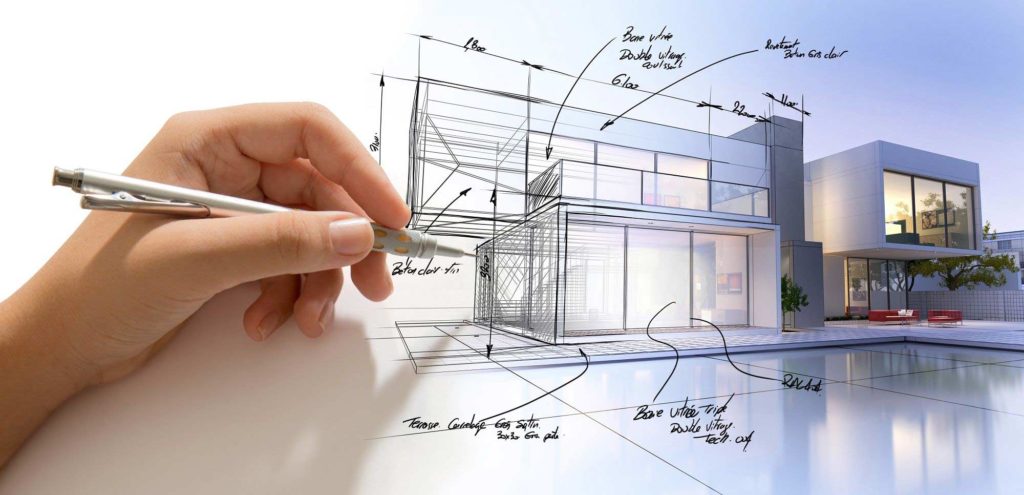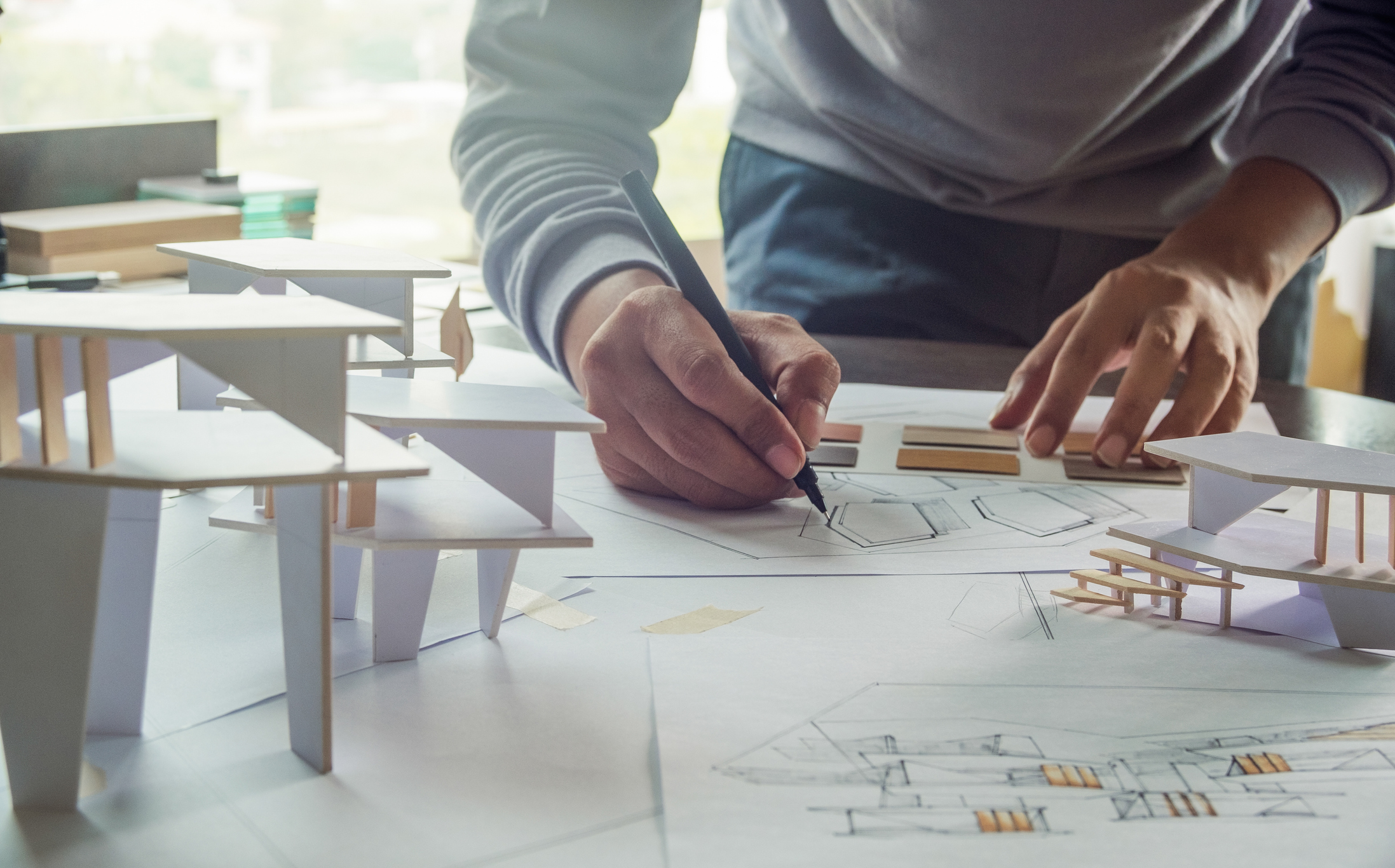Architect Guide to Sustainable Building Materials
Architect Guide to Sustainable Building Materials
Blog Article
Comprehending the Diverse Profession Paths Available for Aspiring Architect
As a hopeful Architect, you have a world of profession paths waiting for you. Whether you're drawn to conventional design or the subtleties of sustainable layout, there's a specific niche that lines up with your interests.
Typical Style: Designing Buildings and Structures
Traditional architecture focuses on developing structures and frameworks that blend performance with visual appeal. As you explore this area, you'll appreciate the elaborate balance between type and purpose. You'll discover to draw motivation from historic styles, incorporating elements like symmetry, products, and workmanship. Your styles can mirror cultural heritage, showcasing regional traditions while meeting contemporary demands.
You'll develop abilities in preparing, model-making, and site evaluation, allowing you to visualize and connect your concepts successfully. Engaging with clients, you'll need to understand their vision and translate it right into viable styles.
Additionally, constructing codes and sustainability techniques are crucial in your work, ensuring your frameworks are risk-free and eco-friendly. As you expand in your job, you'll discover chances in residential, commercial, or also reconstruction tasks, each offering special difficulties. Embracing standard design paves the means for a satisfying occupation that admires the past while shaping the future.
Urban Preparation: Forming Neighborhoods and Public Spaces
As an ambitious Architect, you can play a crucial function as a metropolitan planner, transforming exactly how communities connect and operate. By using neighborhood engagement approaches, you'll guarantee that homeowners have a voice in shaping their environment. And also, incorporating lasting style principles will certainly assist create areas that not just satisfy today's needs but additionally safeguard the future.
Function of Urban Planners
While lots of might believe of engineers as the single visionaries behind structures, metropolitan planners play a necessary role in forming the broader landscape of communities and public areas. They analyze land use, zoning regulations, and neighborhood requires to produce sustainable atmospheres that boost high quality of life. By collaborating with different stakeholders, you'll aid create parks, transport systems, and suburbs that promote social interaction and accessibility. Urban organizers also concentrate on ecological considerations, guaranteeing that growths integrate environment-friendly spaces and support biodiversity. Your experience in spatial layout and community dynamics allows you to picture future development while protecting social heritage. In this important duty, you'll directly influence exactly how people experience their surroundings, making every task a possibility for favorable adjustment.
Area Interaction Strategies
Reliable neighborhood interaction approaches are important for metropolitan planners to assure that the voices of citizens are heard and valued in the preparation procedure. To foster meaningful dialogue, you should focus on open online forums and workshops where neighborhood members can express their concepts and problems. Use studies and social networks to get to a broader target market, ensuring varied viewpoints are included. Teaming up with regional companies can boost depend on and facilitate deeper connections. It is essential to offer clear details regarding suggested projects and decision-making processes, enabling homeowners to feel enlightened and empowered. By actively paying attention and including feedback, you'll produce areas that show the neighborhood's requirements, ultimately leading to more lasting and effective city environments. Welcome openness and continual discussion for long lasting effect.
Lasting Design Concepts
When designing urban spaces, integrating sustainable style principles is essential for developing atmospheres that flourish both environmentally and socially. You should begin by focusing on energy efficiency, making use of products that decrease waste and promote recycling. Think about integrating green rooms, like parks and gardens, to enhance biodiversity and improve air top quality. Promoting walkability and public transportation can lessen reliance on cars, fostering a healthier community.
Creating with water conservation in mind is likewise key-- assume concerning rainfall yards and permeable surfaces to handle stormwater. Including neighborhood members throughout the preparation process guarantees that the spaces you develop fulfill their requirements and urge social communication. By embracing these principles, you'll add to vivid, lasting urban landscapes that benefit every person.

Landscape Style: Creating Lasting Outdoor Atmospheres
As you discover landscape architecture, you'll uncover crucial layout concepts that develop practical and attractive outdoor areas. Sustainable techniques play an important function in guaranteeing these environments flourish while minimizing environmental effect. And also, you'll locate a range of profession possibilities that enable you to make a genuine distinction in how individuals connect with nature.
Design Concepts in Landscape
Recognizing design concepts in landscape design is vital for developing lasting outside settings that harmonize with nature. You'll need to consider components like proportion, scale, and equilibrium to guarantee your designs really feel natural and welcoming. Additionally, pay attention to seasonal adjustments, designing with materials that enhance the environments year-round.
Lasting Practices Review
Lasting methods in landscape architecture not just concentrate on aesthetics yet likewise prioritize environmental health and wellness and resource preservation. By integrating native plants, you improve biodiversity and lower the demand for chemical fertilizers and chemicals. Applying efficient watering systems assists preserve water and decreases drainage, shielding nearby ecological communities. You can develop rooms that advertise soil wellness, such as using organic products and practicing permaculture concepts. In addition, integrating green infrastructure, like rainfall gardens and porous pavements, help in stormwater administration and minimizes urban warm. You contribute to a much healthier earth and provide spaces that foster community link when you produce exterior atmospheres with sustainability in mind. Inevitably, these techniques assure your layouts benefit both individuals and the setting for years ahead.
Occupation Opportunities Exploration
With a solid foundation in sustainable techniques, landscape architecture offers a variety of job courses that permit you to make a meaningful influence on the environment. Urban coordinators usually work together with landscape engineers to produce eco-friendly rooms in urban settings, enhancing city livability. If you're enthusiastic about education, consider becoming a landscape architecture teacher, motivating future generations.
Sustainable Style: Concentrating On Eco-Friendly Practices
As you explore your occupation in architecture, embracing eco-friendly practices can establish you apart in an affordable area. Sustainable style focuses on creating buildings that lessen environmental impact while improving owner well-being. By integrating eco-friendly products, energy-efficient systems, and lasting structure strategies, you'll contribute to a greener future.
Begin by acquiring knowledge of eco-friendly certifications like LEED or BREEAM, which can reinforce your qualifications. Think about exactly how natural light, air flow, and thermal efficiency can maximize style. Team up with designers and environmental professionals to innovate options that lower waste and conserve sources.
Don't fail to remember the significance of neighborhood involvement-- appealing neighborhood stakeholders can influence layouts that harmonize with the setting. As clients significantly focus on sustainability, your know-how in eco-friendly techniques will certainly not just draw in tasks but additionally fulfill your interest for accountable design. Accept this vital facet of the profession, and watch your occupation grow.
Historic Conservation: Protecting and Bring Back Social Heritage
While you begin on your building trip, think about the necessary role of historical preservation in maintaining our cultural heritage. This area concentrates on the go right here security and restoration of substantial buildings, websites, and structures that tell the stories of our past. By participating in historical preservation, you'll assist protect the architectural heritage that forms neighborhood identity.
As a historical preservation Architect, you'll examine historic relevance and evaluate the condition of frameworks. You'll function very closely with historians and conservationists to guarantee authentic reconstruction methods are employed. This job path enables you to mix creative thinking with study, allowing you to create remedies that respect original materials and craftsmanship.
Your work not just adds to sustainability by recycling existing buildings yet additionally promotes a sense of satisfaction within areas. Embracing this path will help you become a guardian of background, preserving the stories and looks that enhance our lives.
Inside Style: Enhancing Indoor Spaces
Historic preservation and indoor architecture both share a commitment to improving the built setting, but they concentrate on different facets. While historical conservation stresses keeping a structure's social and historical value, indoor architecture absolutely nos in on maximizing interior rooms for functionality and visual appeals.
As a hopeful Architect, you'll find that interior design allows you to blend imagination with technical skills. You'll design spaces that not just look good however likewise promote convenience and performance. This area includes understanding how light, color, and products connect within a space, influencing mood and usability.
You'll work on numerous tasks, from residential homes to commercial offices, ensuring that each setting meets the requirements of its residents. By focusing on user experience, you can transform insides into useful and inspiring rooms, making a considerable influence on just how people engage with their surroundings. Accept the opportunity to improve indoor environments and shape the way people work and live.
Industrial Layout: Merging Functionality With Looks
Commercial layout plays an essential role in creating items that effortlessly Read Full Report blend aesthetics with capability, ensuring that what you utilize daily is not only aesthetically enticing but also useful. As an ambitious Architect, you might engage on your own in this area, concentrating on designing every little thing from furnishings to customer electronics. Your work entails comprehending individual requirements, materials, and manufacturing processes, permitting you to create ingenious options that enhance day-to-day experiences.
In commercial layout, you'll frequently team up with marketers, manufacturers, and designers, ensuring that your designs are not only attractive yet also possible. This profession path offers a vibrant setting where imagination fulfills functionality, making it a rewarding selection for engineers interested in shaping the products of tomorrow.
Frequently Asked Inquiries
What Educational Qualifications Do I Need to Come To Be a Designer?
To end up being a designer, you'll need an expert level in architecture, generally a Bachelor's or Master's. In addition, you'll have to finish a teaching fellowship and pass the Architect Enrollment Exam to exercise legitimately.
Are There Qualification Needs for Different Architectural Occupation Paths?
Yes, there're certification needs for numerous architectural courses. Architect. You'll need to pass tests, total teaching fellowships, and occasionally pursue specialized training, depending on your chosen focus, like landscape style, city layout, or historical conservation
What Software Program Skills Are Vital for Engineers Today?

Just How Can I Gain Practical Experience While Examining Design?
You can acquire functional experience by interning at building firms, joining layout competitors, offering for area projects, or collaborating with classmates on real-world assignments. These chances boost your skills and construct useful connections in the market.
What Task Opportunities Exist Outside Traditional Design Firms?
You can explore different task opportunities outside conventional style companies, like urban preparation, indoor style, landscape design, construction administration, property advancement, and even functions in sustainability consulting. Each deals special challenges and benefits.
Whether you're attracted to conventional design or the nuances of lasting style, there's a specific niche that straightens with your interests.When a knockout post making urban spaces, including sustainable layout principles is vital for developing environments that flourish both ecologically and socially.As you explore landscape architecture, you'll find essential layout principles that produce functional and stunning exterior spaces.Comprehending layout principles in landscape design is necessary for creating sustainable outdoor settings that balance with nature.In industrial design, you'll commonly collaborate with manufacturers, marketing professionals, and engineers, making sure that your designs are not just gorgeous yet likewise practical.
Report this page